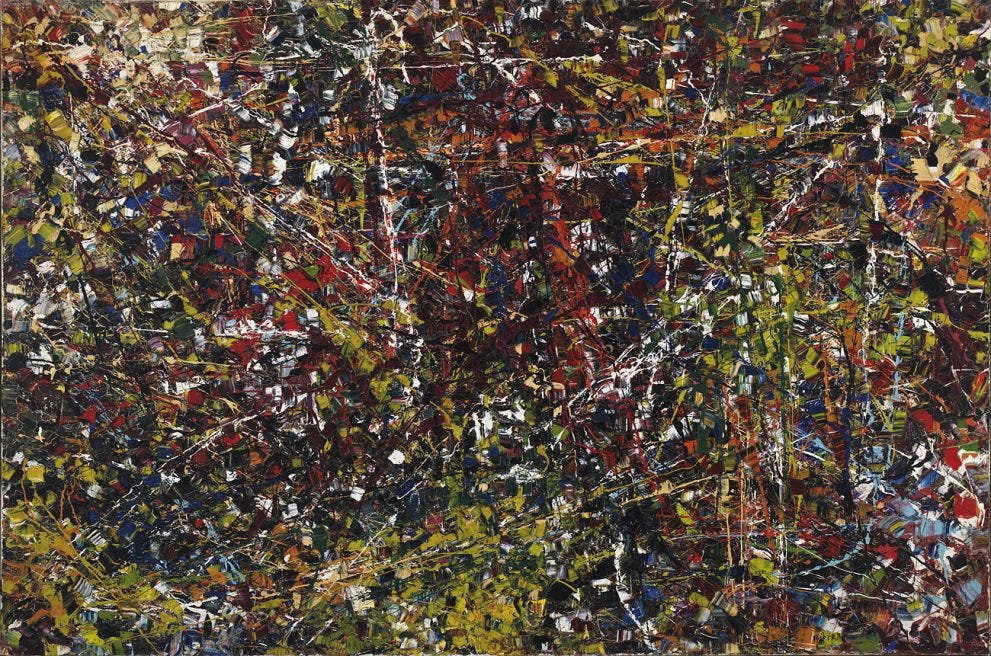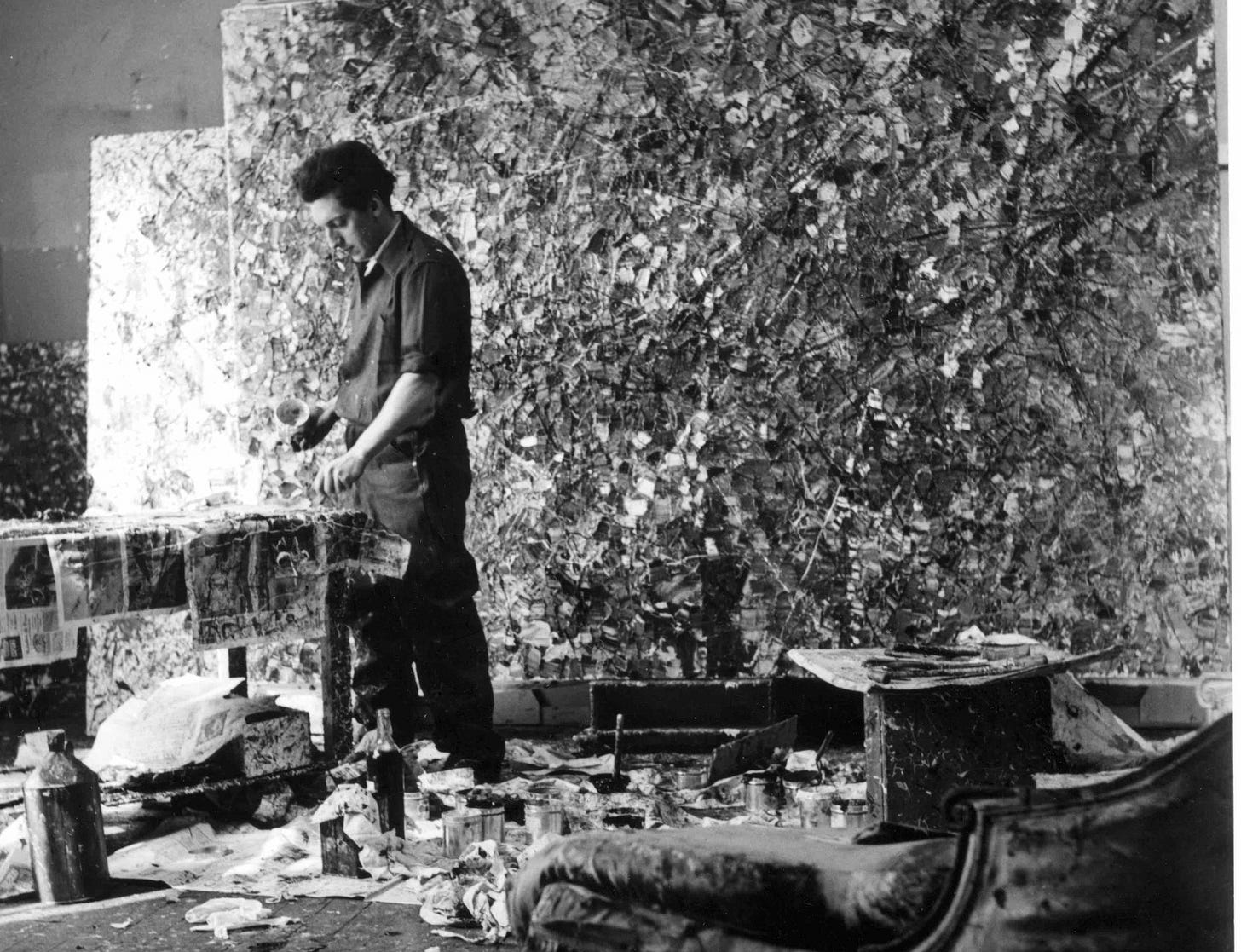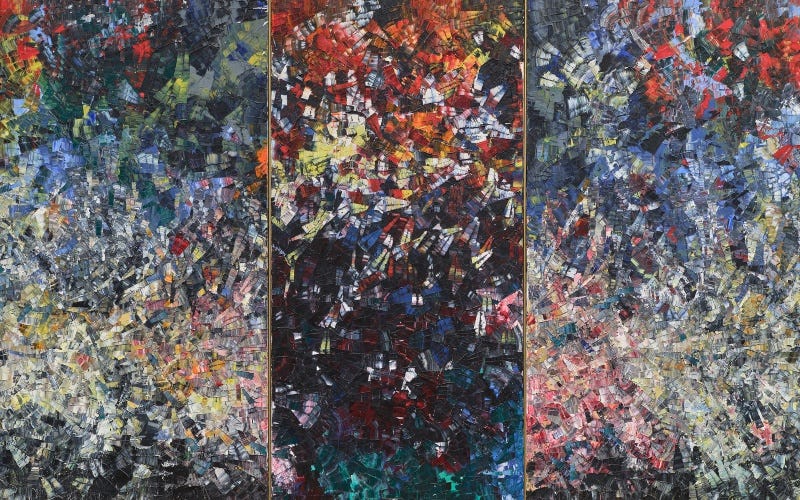Jean-Paul Riopelle : The Magic of Happenstance
This week, I had one of those bizarre experiences that makes you reflect on the twists and turns of life. I was navigating the stairs at my office when, in an unfortunate turn of events, I lost my footing and tumbled down. As I sat there, an older gentleman, the security guard on duty, rushed over to help me. Let’s call him Giulio.
While I iced my knee, Giulio shared a captivating story that left me pondering the nature of chance. He recounted a time decades ago, in Romania, when he fell for a young woman named Corina. Their romance flourished amid late nights at discotheques, but life pulled them in different directions, and Giulio eventually moved to Canada.
Fast forward ten years: while catching up with a friend in Bucharest, Giulio mentioned Corina. To his astonishment, his friend revealed that Corina was now his employee! It felt like fate. Giulio asked for her number, eager to reconnect. When he called, Corina was thrilled to hear from him. Giulio wasted no time and booked her a round-trip ticket so she could visit him. I couldn’t help but ask if they ended up together, and he smiled, saying, “No, it was just a friendly reunion”, and he added that “A life is more than a love.”
As I listened to Giulio’s story, I couldn’t help but reflect on the randomness of life and the chance encounters that shape our journeys. If I hadn’t tripped on those stairs, I never would have met Giulio or heard his extraordinary tale.
In a world where routine dominates our lives, serendipitous encounters remind us of the beauty of happenstance. This led me to ponder how chance and luck play significant roles in artistic creation, especially in painting, where unexpected accidents and surprises can lead to extraordinary results.
Happenstance in Modern Art
Jean-Paul Riopelle (1923-2002) exemplified this idea by embracing chance as a means of expression in his artwork. He deliberately invited forces beyond his control, allowing spontaneity to guide his creative process. Initially, he was devoted to the Automatist approach, which focused on painting without preconception. However, by 1949, Riopelle had begun to carve out a distinctive style in which the concept of chance became central to his work. Through his art, Riopelle showed us that sometimes the most compelling creations arise from the unexpected.
Vent du nord, Jean-Paul Riopelle (1952–1953)
The Rise of Automatism
Riopelle began his career as a passionate advocate of automatist painting. Born in 1920s Montreal, he honed his craft at the École des Beaux-Arts. Under the mentorship of Paul-Émile Borduas, a founding member of the Montreal automatist movement, Riopelle was introduced to innovative artistic ideas. His journey took a significant turn in the late 1940s when he moved to Paris, where he became part of a vibrant Surrealist community. There, he developed a unique style influenced by the techniques of Jackson Pollock, marking an evolution in his artistic expression.
Jean Paul Riopelle at his Atelier in Paris, 1952
Automatism is an artistic approach that encourages the creation of artwork without deliberate thought, tapping directly into the depths of the unconscious mind. The Montreal Automatists, for example, aimed to break free from intention and structure, seeking to express a universal human experience devoid of bias. This quest for liberation from the conscious mind led them to adopt increasingly intuitive methods, such as the use of palette knives and fingers when painting. Ironically, these techniques often contradicted their claims of working without intention.
For Riopelle, the traditional tools like the brush were limitative. As he evolved his style, Riopelle sought to create ambitious abstract compositions characterized by generous applications of paint to create unusual textures. By abandoning figuration and tools typically used by painters, Riopelle developed a unique manner of applying paint. The result? His artworks took on a striking multichromatic, mosaic-like appearance that set him apart from his contemporaries in the 20th century art scene. Through this innovative approach, Riopelle carved out his own distinctive place in the art world.
Perspectives, Jean-Paul Riopelle (1956)
Towards Freedom of Creation
Despite his early involvement with automatism, Jean-Paul Riopelle ultimately rejected this approach. In automatist artworks, artists maintain a degree of control, even while incorporating random elements into their compositions. This notion troubled Riopelle, who yearned for an art form that eliminated control, fostering an environment for true creative freedom.
For Riopelle, true creativity could only flourish through total chance. He believed that when artists fully open themselves to chance, they create a space for unexpected forces to shape art. This radical approach allowed for a new expression, where spontaneity and unpredictability took the reins. In his quest for artistic liberation, Riopelle invited the universe itself to influence his creations.
In the 1950s, Riopelle emerged with his signature style, creating massive, vibrant mosaic paintings using a palette knife and directly squeezing colors from the tube onto the canvas. This bold approach marked a significant departure from his earlier automatist roots.
Tribute to the Water Lilies (Pavane), Jean-Paul Riopelle (1954)
Connecting Threads
My chance encounter with Giulio, his captivating love story, and Riopelle’s evolution toward a more liberated artistic expression all share a common thread: happenstance. This serendipitous element of life often surprises us when we least expect it, yielding good results (i.e. my drafting of this post).
Just as Giulio’s unexpected kindness led to an interesting conversation, Riopelle sought to achieve unbiased results in his artwork, ultimately culminating in creations born from pure chance. Happenstance infuses life with spontaneity, allowing for connections and experiences that would otherwise be impossible in a world where we hold total control over our lived experiences. In both art and life, embracing the unpredictable can lead to good outcomes.
A Note on International Recognition
Ultimately, Riopelle is one of Canada’s most celebrated artists. Since 1945, Riopelle has been featured in over 200 exhibitions worldwide, showcasing his work in major cities like Berlin, São Paulo, Philadelphia, and London. Notably, he received the UNESCO Prize after representing Canada at the Venice Biennale in 1962. Today, his artworks are held in public collections across more than 60 cities, totaling around 400 pieces.





